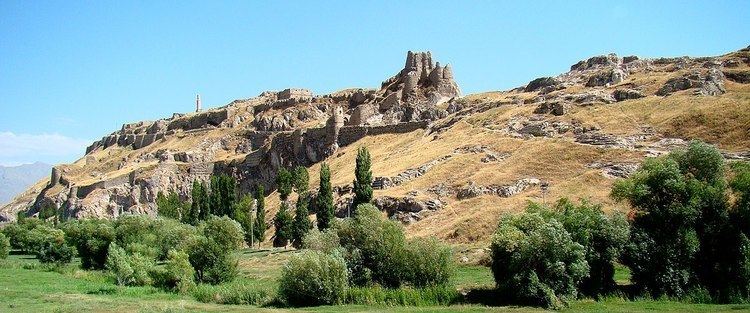Type Fortress Demolished Partially | Open tothe public Yes | |
 | ||
Condition Large sections of walls are still standing. Built 8th and 7th centuries BC Materials Unmortared basalt (lower walls) and mud-bricks Similar Akdamar Island, Lake Van, Hoşap Castle, Cathedral of the Holy Cross - Ag, Ishak Pasha Palace | ||
Turkey van fortress the citadel of van part 31
The Fortress of Van (Armenian: Վանի Բերդ, also known as Van Citadel, Turkish: Van Kalesi or Kurdish: Kela Wanê) is a massive stone fortification built by the ancient kingdom of Urartu during the 9th to 7th centuries BC, and is the largest example of its kind. It overlooks the ruins of Tushpa the ancient Urartian capital during the 9th century which was centered upon the steep-sided bluff where the fortress now sits. A number of similar fortifications were built throughout the Urartian kingdom, usually cut into hillsides and outcrops in places where modern-day Armenia, Turkey and Iran meet. Successive groups such as the Medes, Achaemenids, Armenians, Parthians, Romans, Sassanid Persians, Byzantines, Arabs, Seljuks, Safavids, Afsharids, Ottomans and Russians each controlled the fortress at one time or another. The ancient fortress is located just west of Van and east of Lake Van in the Van Province of Turkey.
The lower parts of the walls of Van Citadel were constructed of unmortared basalt, while the rest was built from mud-bricks.
Such fortresses were used for regional control, rather than as a defense against foreign armies. The ruins of this fortress sit outside the modern city of Van, where they support walls built in the medieval era.
A stereotyped trilingual inscription of Xerxes the Great from the 5th century BC is inscribed upon a smoothed section of the rock face, some 20 meters (60 feet) above the ground near the fortress. The niche was originally carved out by Xerxes' father King Darius, but left the surface blank. The inscription survives in near perfect condition and is divided into three columns of 27 lines written in (from left to right) Old Persian, Babylonian, and Elamite. It is the only known Achaemenid royal inscription located outside of Iran. Other cuneiform inscriptions are typically off limits unless to large tour groups. It states that:
When it was published by Eugène Burnouf in 1836, through his realization that it included a list of the satrapies of Darius (repeated by Xerxes in nearly identical language), he was able to identify and publish an alphabet of thirty letters, most of which he had correctly deciphered. Burnouf's reading of the Van trilingual inscription had made a significant contribution to the deciphering of Old Persian cuneiform.
Silva Tipple New Lake led an American expedition to the ruins in 1938-40.
